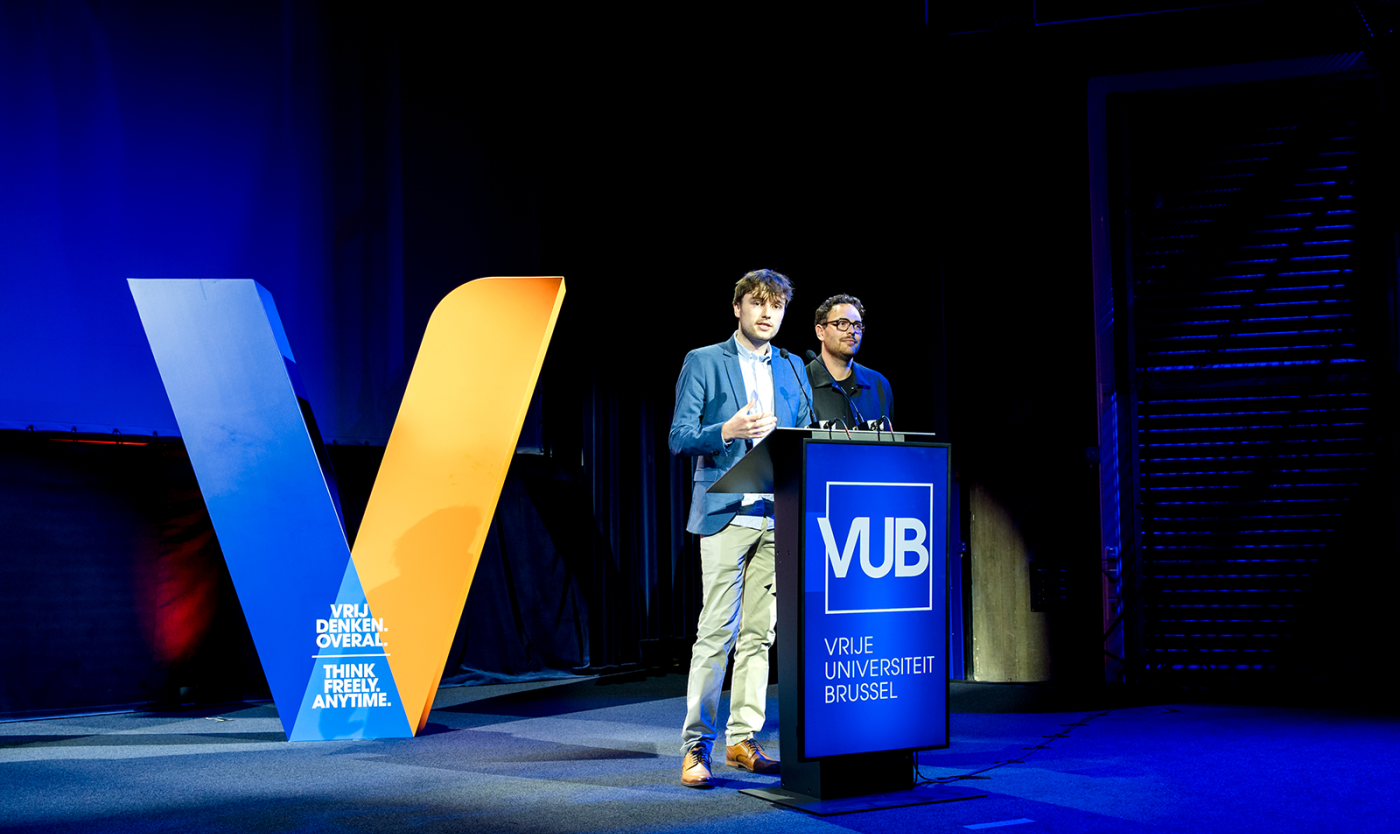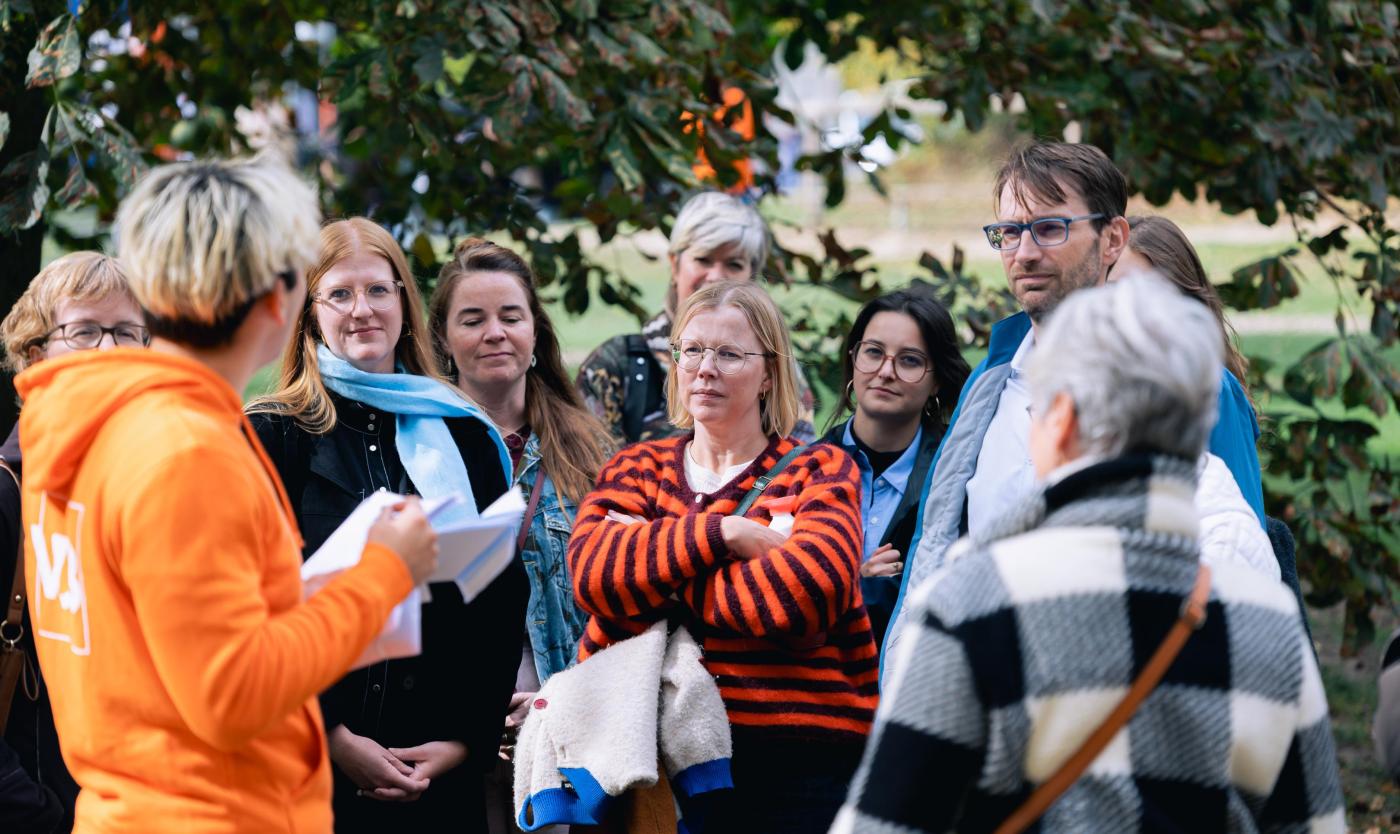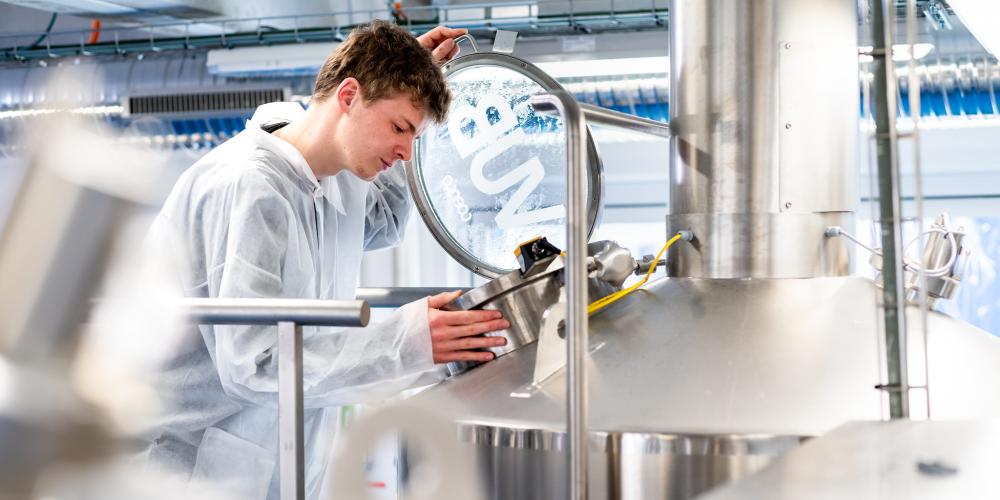
The Vrije Universiteit Brussel (VUB) reached an unprecedented milestone in 2024 with its research strategy. With a record €156.5 million invested in research, the university has strengthened its role as a leading player in Brussels and across Europe. It is not only the scale of investment that stands out, but also the impact and recognition that come with it.
Under the Horizon Europe programme, VUB secured no fewer than 158 research projects, amounting to €102.1 million in EU funding. Within its category, this makes VUB the most successful institution in Europe for attracting such grants. The projects span a wide range of fields, from climate science to digital innovation and medical technology.
In addition, the university obtained five prestigious ERC (European Research Council) grants, supporting groundbreaking fundamental research. A further nine Marie Skłodowska-Curie fellowships were awarded, aimed at international mobility and postdoctoral research.
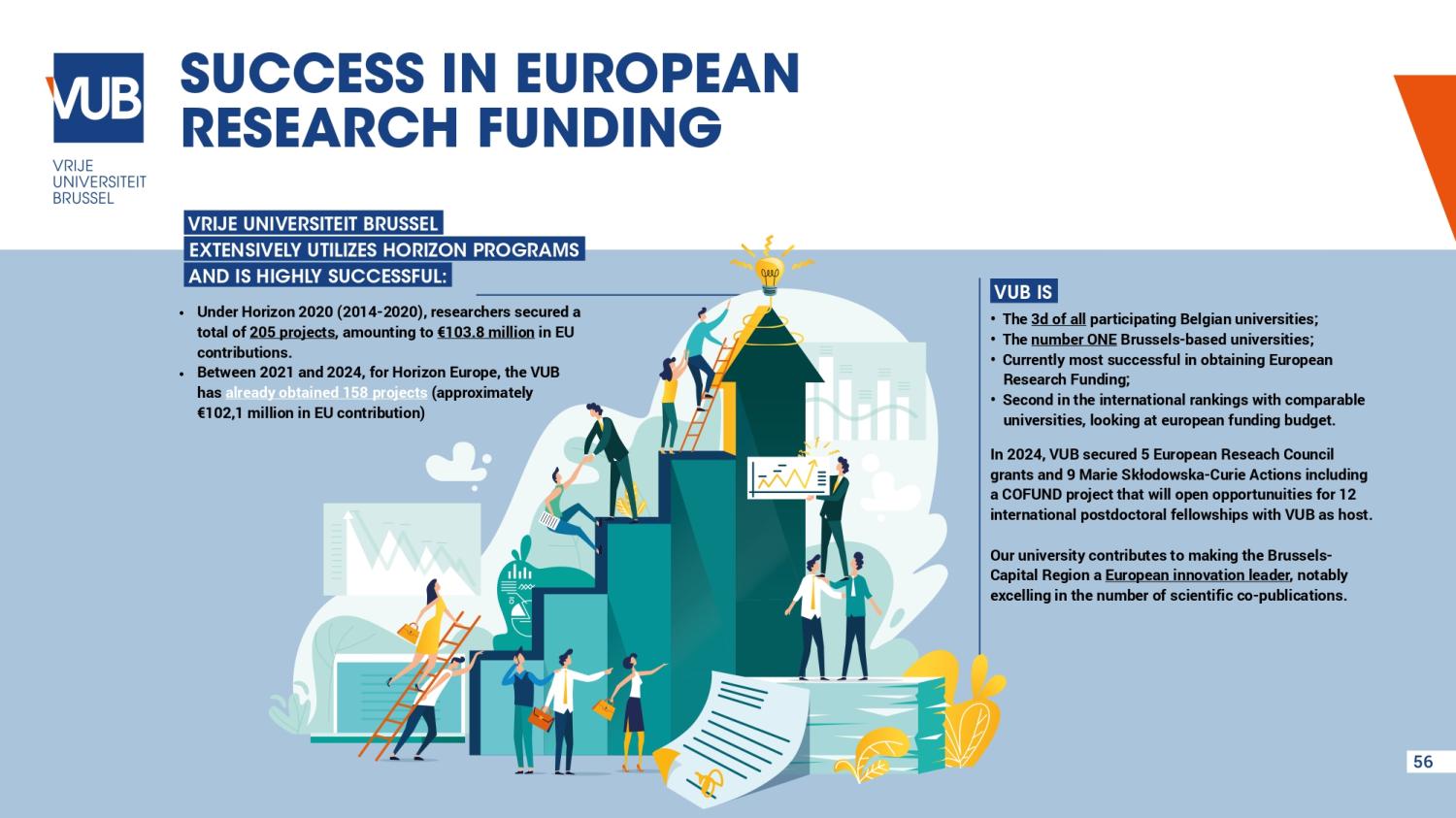
European Union funding for VUB research proves highly successful
This infrastructure is taking shape through a series of newly launched and enhanced research platforms. The BruBotics Rehabilitation Research Center opened its doors as a high-tech facility for movement analysis and technology-assisted rehabilitation. Located between UZ Brussel and the VUB Health Campus, it brings together various research groups and focuses on human-centred robotics.
The Visual and Spatial Tissue Analysis (VSTA) platform has also been expanded. It supports cancer research and precision medicine through advanced RNA and protein expression techniques, DNA mutation analysis and digital imaging.
Meanwhile, for researchers in the social sciences and humanities, the Brussels Digital Text Lab (B-TXT) provides support in collecting, analysing and archiving digital textual data. As a hub for digital humanities, it promotes computational approaches in historical and linguistic research.
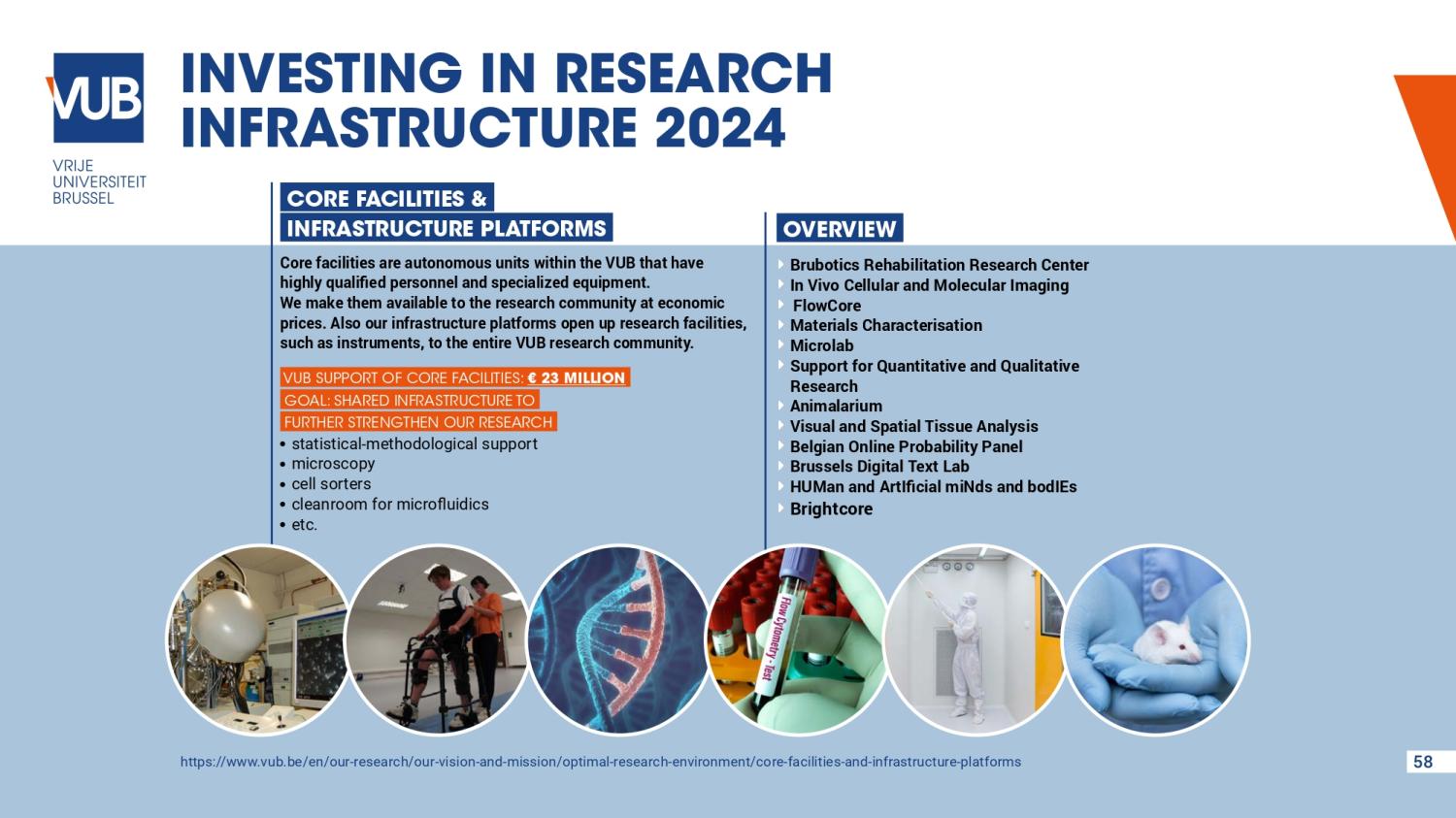
VUB investments in research infrastructure
VUB’s scientific impact is also reflected in individual recognition. Mathematician Sam Mattheus solved an 85-year-old problem, earning both the EOS Pipet Prize and the international Frontiers of Science Award. Ann Van Griensven was awarded an AXA Research Chair for her work on water quality and climate adaptation.
The BruBotics team received recognition from the Royal Flemish Academy of Belgium for Science and the Arts for excellence in science communication, while climate scientist Wim Thiery was honoured with the Laureate of the Academy Award for his research on climate extremes.
“VUB demonstrates that a relatively small university can achieve big impact. Our researchers are succeeding in operating at the highest European level”
The achievements of 2024 show that VUB is not only competing at the top tier, but is also actively shaping the science of tomorrow. Through strategic investment, international recognition and world-class infrastructure, the university continues to fulfil its societal role as a driving force for innovation and knowledge.
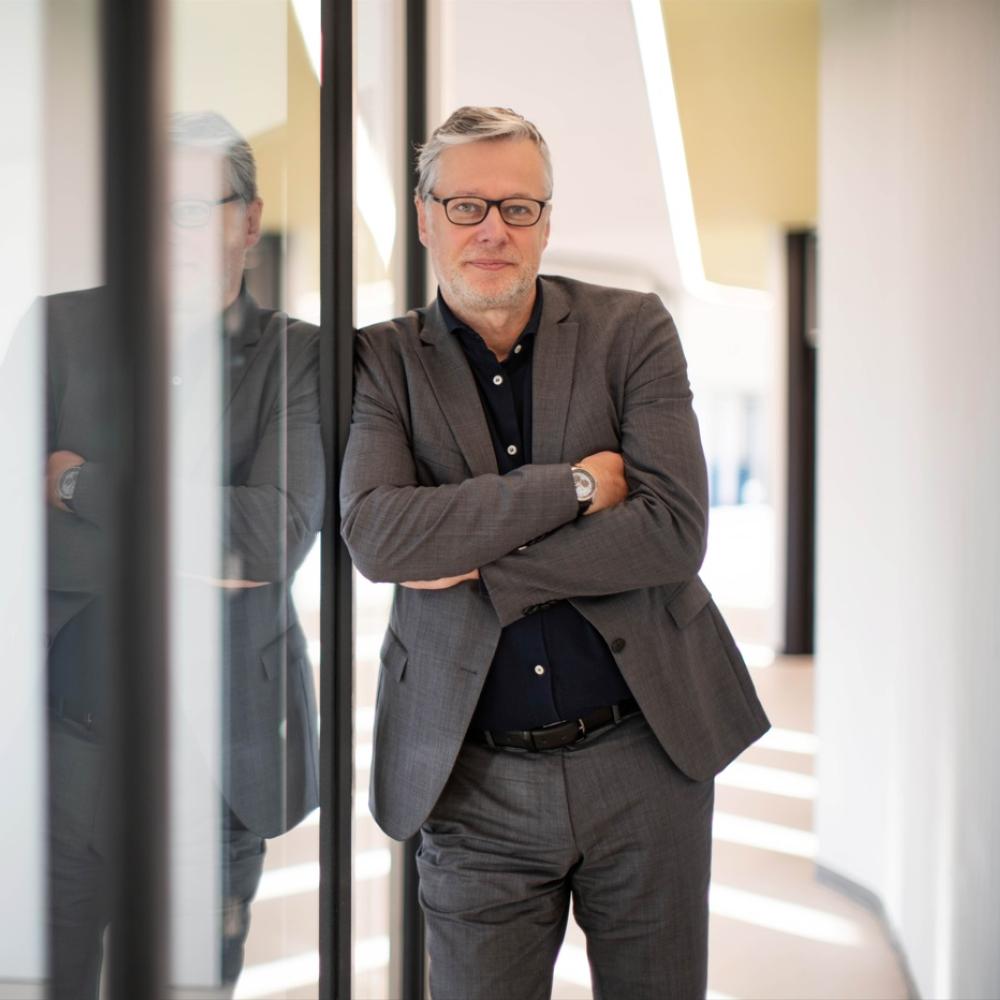
Pieter Ballon, Vice-Rector for Research
“As a university, we have made a clear choice: we invest not only in excellent research, but also in the infrastructure that makes it possible. That is essential to stimulate interdisciplinarity and societal relevance.”
Research Valley VUB: Where Science Meets Society
On the green campus of the Vrije Universiteit Brussel (VUB), an ecosystem is taking shape that breathes innovation: the Research Valley. Here, cutting-edge research facilities join forces to tackle society’s most pressing challenges — from health and climate to mobility and the circular economy.
Bio Incubator Brussels
In partnership with the Flemish Institute for Biotechnology (VIB), the Bio Incubator provides a breeding ground for biotech start-ups. Among its residents is the VIB Nanobody Core Facility, which is working on revolutionary treatments using nanobodies. “We want to bridge the gap between fundamental research and commercial applications that can transform healthcare,”
— Prof. Jan Steyaert
MICROLAB
This brand-new 300 m² cleanroom is equipped for glass and silicon microfabrication. MICROLAB supports both academic and industrial research into microfluidic applications for the medical and pharmaceutical sectors. “We’re building the chips of the future — not for computers, but for liquids,”
— the MicroFlow Cell team
Cryo-Electron Microscopy
Although no recent web page is available, it is well known that VUB houses one of Europe’s most advanced cryo-electron microscopes. This technology makes it possible to visualise proteins at atomic scale — crucial both for drug development and for fundamental biological insight.
Circular Retrofit Lab
This experimental facility transforms old student housing into flexible, circular buildings. A pilot project within the EU Horizon 2020 programme, the lab demonstrates how reusable materials and demountable structures can shape the future of sustainable construction.
MOBILISE
The MOBILISE research group analyses mobility and develops tools to help cities become more sustainable and inclusive. From participatory planning methods to logistics models, MOBILISE links science with policy and civic engagement. “We mobilise people to think with us about the mobility of tomorrow,”
— the MOBILISE mission statement
Climate Chambers
On the fifth floor of Building F are six new climate chambers where plants are studied under controlled conditions. Professor Harry Olde Venterink investigates how fertiliser, temperature and CO₂ levels affect ecosystems. “By pooling resources, we were able to install six chambers at once and simulate complex climate scenarios,”
— Prof. Harry Olde Venterink
Organic Chemistry
The Organic Chemistry research group is based on the top floor of Building G. “We design and build molecules that don’t exist in nature, but which can do extraordinary things — particularly in medicine,”
— Prof. Steven Ballet, Head of Department Their laboratories combine a wet lab, where new molecules are synthesised, with a dry lab, where the structures of existing molecules are mapped. Both are equipped with state-of-the-art facilities.
